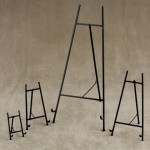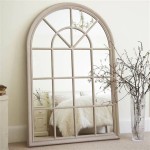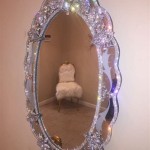How To Hang a Very Heavy Mirror On The Wall
Hanging a heavy mirror safely and securely requires careful planning and execution. This process differs significantly from hanging lighter wall decor and necessitates specific tools and techniques to ensure both the mirror and the wall remain undamaged. Understanding the weight distribution and choosing appropriate hanging hardware are crucial for success.
Assessing the Mirror and Wall
Before beginning, accurately determine the mirror's weight. Bathroom scales are often sufficient for smaller mirrors, but larger, heavier mirrors may require a more robust weighing method. Contacting a moving company or utilizing industrial scales can provide accurate measurements for extremely heavy pieces. This precise weight is critical for selecting appropriate hanging hardware.
The wall type also plays a vital role in the hanging process. Drywall, plaster, concrete, and brick each possess different load-bearing capacities and require specific fasteners. For drywall, it's often recommended to locate and utilize wall studs for maximum support. A stud finder can help locate these structural supports. If studs aren't available or suitably positioned, heavy-duty drywall anchors designed for substantial weight are necessary. Plaster walls, often found in older homes, may require specialized plaster screws or anchors. Concrete and brick walls offer greater strength, but require appropriate drill bits and anchors, such as concrete screws or masonry anchors.
Prior to drilling, it's essential to check for any electrical wiring or plumbing within the wall. Using a stud finder with wire detection capabilities or consulting a professional electrician can prevent accidental damage.
Selecting the Right Hanging Hardware
Choosing the correct hanging hardware is paramount for safety and stability. The combined weight capacity of the chosen hardware must significantly exceed the mirror's actual weight. This provides a safety margin and ensures long-term stability. D-rings and wire are common for lighter mirrors but are generally unsuitable for very heavy mirrors. Instead, heavy-duty D-rings or J-hooks, rated for substantial weight, paired with appropriately strong picture wire or heavy-duty picture hanging cleats, are recommended.
French cleats offer a robust and secure hanging solution for heavy mirrors. These consist of two interlocking pieces of hardware, one attached to the wall and the other to the back of the mirror. This system distributes the weight evenly across the cleat, providing excellent stability. Mirror mounting clips, specifically designed for heavy mirrors, are another option. These clips secure the mirror to the wall at multiple points, further distributing the weight and preventing movement.
For extremely heavy mirrors, consider consulting with a professional installer or contractor. They possess the experience and expertise to assess the specific situation and recommend the most appropriate hardware and installation method.
Installation Process
Mark the desired mirror placement on the wall using a level and pencil. Precise measurements ensure the mirror hangs straight and at the correct height. Once the location is marked, carefully measure and mark the placement of the hanging hardware on the back of the mirror. Ensure these markings align with the chosen hanging method and the hardware on the wall.
Depending on the chosen hardware and wall type, pre-drilling pilot holes may be necessary to prevent cracking or damage to the wall. Use the appropriate drill bit for the wall type and hardware being used. After drilling, insert the wall anchors or screws, ensuring they are securely fastened. If using French cleats or mounting clips, ensure the wall portion is firmly attached before proceeding.
With the wall hardware in place, carefully lift the mirror and align the hanging hardware on the back of the mirror with the corresponding hardware on the wall. For French cleats, slide the mirror's cleat onto the wall cleat until it sits securely. For D-rings and wire, ensure the wire is taut and evenly distributed across the hooks or screws. For mounting clips, carefully engage the clips with the mirror and wall mounts.
After hanging the mirror, double-check its stability by gently applying pressure to various points. Ensure the mirror is flush against the wall and shows no signs of movement. If using wire, ensure it's not visible from the front. If any instability is detected, re-evaluate the hardware choice and installation process.
Safety Precautions
Throughout the entire process, prioritize safety. Always wear appropriate safety glasses when drilling and handling heavy objects. Use a sturdy ladder or step stool when working at height, ensuring it's positioned on a stable and level surface. Enlist the help of another person when lifting and maneuvering the heavy mirror, especially for larger and more cumbersome pieces. This prevents strain and reduces the risk of dropping the mirror and causing injury or damage.

How To Hang A Large Or Heavy Mirror

How To Hang A Very Heavy Picture Or Mirror The Best

How To Hang A Heavy Mirror The Home Depot
How To Hang A Heavy Mirror On Drywall Without Damaging It Or The Wall Quora

A Better Way To Hang Heavy Mirror Hanging Picture Wire

How To Hang A Heavy Mirror C R F T

How To Hang A Heavy Mirror With Pictures Wikihow

Hanging A Large Mirror On The Wall Tutorial

Hanging Heavy Mirror On Plaster Walls 6 Steps With Pictures Instructables

How To Hang Something Heavy Like A Pro Calling It Home Diy Improvement Projects Hanging Mirror








